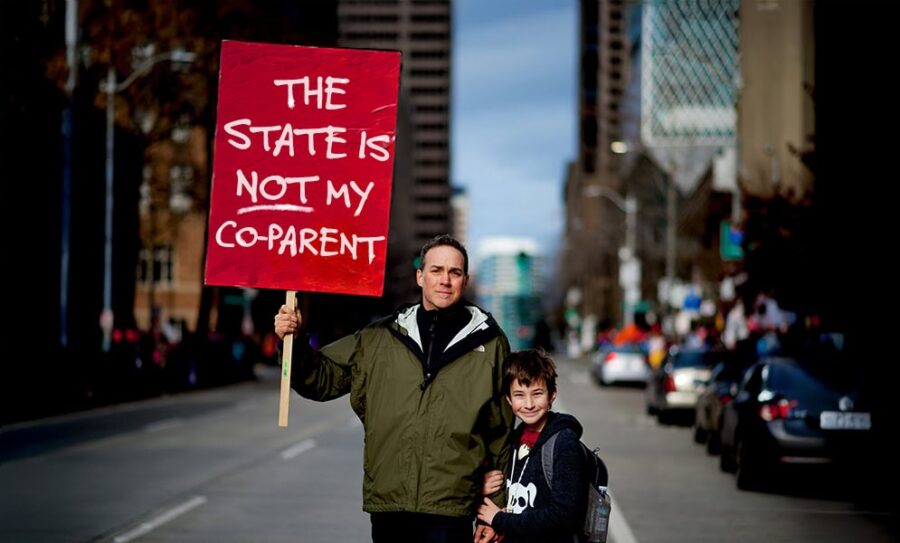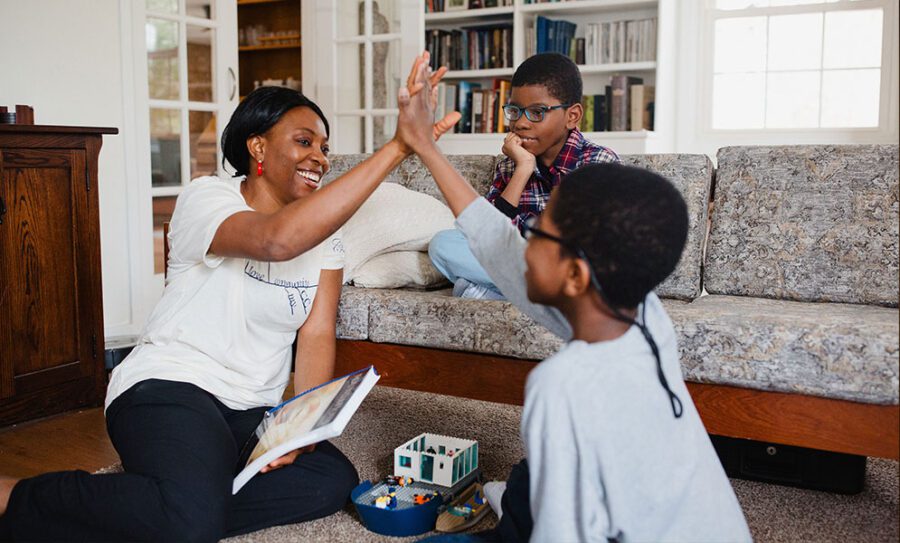We believe in parental autonomy not only because it is a sacred, God-given right, but also because it is a child’s best protection against the tyranny of the state and the slavery of dependency. So, what should we do when the state tries to encroach on the jurisdiction of parents?
Why are States Pushing the Make Homeschool Safe Act?
Legislative Concerns About Homeschool Safety
A common sentiment among legislators and activists, as written in the Make Homeschool Safe Act, is that “It is in the interest of the Legislature to ensure homeschooled children are safe and receive a sufficient education.”
Thus, legislators across the country are advocating for bills with the stated goal of “making homeschooling safe.” They believe that homeschooled children are at a high risk of being abused by their parents, so they want to ensure that they are accounted for by the state.
Key Politicians Supporting the Act
As Dana Nessel, Attorney General in Michigan, said, the state should implement “monitoring mechanisms” onto homeschooling to “ensure that all children, including those homeschooled, receive necessary protections [from abuse].”
Nessel is joined in this effort by Michigan Representatives Matt Koleszar and Stephanie Chang, Oklahoma Representative Amanda Swope, Illinois Representative Terra Costa Howard, and lawmakers from Connecticut, New Jersey, West Virginia, New Hampshire, Indiana, and Utah.
It is clear that legislators and elected officials around the nation are organizing around the idea that homeschooling parents may be abusers, so the state must be the homeschooled children’s protector. Never mind that “Homeschooled children are abused at a lower rate than are those in the general public, and no evidence shows that the home educated are at any higher risk of abuse” (Ray, 2018) or that a Gen 2 Survey found that homeschooled students are 257% less likely to be sexually abused than their public-schooled peers.
Who is lobbying for the Make Homeschool Safe Act?
Coalition for Responsible Home Education’s Role
What is the common thread linking all these legislators together and why has the act of regulating homeschools suddenly become so prevalent? The answer to both questions is the Coalition for Responsible Home Education model policy, the Make Homeschool Safe Act.
CRHE’s Vision and Mission
The Coalition for Responsible Home Education’s (CRHE) vision statement is “Homeschooled children’s right to a comprehensive and empowering education and a safe and supportive home environment is affirmed and protected by laws, stakeholders, and society as a whole.”
Sounds wonderful, right? Who would not want children to be safe and have a good education! Sadly, as we will explore, when the CRHE vision plays out in real policy, it not only fails to help homeschooling children but also harms children, families, and whole communities.
Lobbying Efforts Across States
CRHE leadership is closely involved with state efforts to regulate homeschooling in the name of abuse prevention and is lobbying lawmakers to utilize their model policy. Regardless of whether a state is blue or red, the Make Homeschool Safe Act has been introduced in different forms and to different degrees around the nation.
What does the Make Homeschool Safe Act propose?
10 Key Provisions of the Make Homeschool Safe Act
The bill names ten provisions that it suggests lawmakers implement to accomplish their goal. To understand each of them and their implications in-depth, it is important to read the bill in its entirety. However, in short, these are the ten provisions:
Registration and Educational Requirements
- Annual registration and notice: Parents must annually gain consent from their local school district to homeschool at the risk of being subjected to a warning or investigation by the Child Protective Services.
- Parental qualifications: All parents or guardians must have a high school diploma or an equivalent, such as a General Education Development Certificate (GED), to homeschool. Parents lacking this credential will be supervised by a “qualified education professional” (QEP).
- Curriculum standards: Homeschooling curriculum must meet the same requirements as public-school curriculum and teach a specific set of subjects.
Assessment and Monitoring Provisions
- Instructional time: Homeschools must provide formal instruction for five hours a day with a total of 875 hours annually.
- Student assessment and progress: Parents and students must be annually evaluated through standardized testing, norm-referenced exams, or a compiled portfolio of work. A QEP must meet the student in person to assess work, and the local superintendent must review and approve the evaluation for the homeschooling to continue.
- Academic recordkeeping: Parents must maintain a portfolio of their student’s work that is available to the QEP, demonstrating that the child’s learning is “at least on par with public school standards.”
Safety and Background Check Measures
- Health/immunization requirements: Homeschooled students must comply with the same medical requirements as those in the public school system. Parents must submit official vaccination documentation or a valid exemption.
- Child protective measures: If a parent or guardian has been investigated for abuse or neglect (regardless of the outcome of said investigation), that parent is prohibited from homeschooling a child for three years unless additional investigative measures are complied with.
- Background screening: All individuals convicted of certain violent, or sex crimes are banned from homeschooling children.
- Public school participation: Homeschooled children are given access to public school extracurricular programs. To engage, homeschoolers must comply with the same state restrictions and regulations as those of their public schooled peers.
How to Defend Against the Make Homeschool Safe Act?
Thankfully, no state has been successful in passing this legislation yet. But that is only because of the involvement and advocacy of principled parents and community members.
Steps for Homeschool Parents
Whether you live in Michigan or Oklahoma, it is the responsibility of homeschool parents to be aware of this dangerous model policy. Here are three simple steps you can take to protect education independence from this model bill:
- Read the Make Homeschool Safe Act in its entirety.
- Analyze the arguments it makes.
- Join the Education Independence Network to learn how to defend against this policy in your state.
By taking these simple steps, you can protect your family and keep education independent from government intrusion!
Resources and Organizations
- Home School Legal Defense Association (HSLDA)’s What Homeschoolers Need to Know about the “Make Homeschool Safe Act”
- Home School Legal Defense Association (HSLDA)’s A New Model Bill Threatens Homeschool Freedom
- Focus on the Family’s What is the Make Homeschool Safe Act—and Why it’s a Threat to Parental Rights





